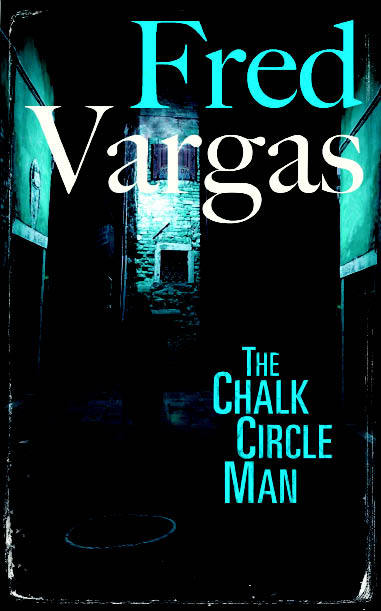Fred Vargas — nom-de-plume of the French archaeologist and historian Frédérique Audoin-Rouzeau — took to writing crime novels in 1991. Among the many unusual aspects of her books is the English take on the French titles. L’Homme à l’envers appears as Seeking Whom He May Devour, Pars vite et reviens tard as Have Mercy on Us All while Sous les vents de Neptune becomes Wash This Blood Clean From My Hand. These English versions possess a sort of genius which I find irresistible.
The novels have also been translated out of the order in which they were written. Just issued is Vargas’s first, The Chalk Circle Man, which will be of particular interest to those, like me, who love her work, for introducing her police inspector hero, Jean-Baptiste Adamsberg.
Adamsberg — short, dark-complexioned, rumpled and attractive to women — works by instinct, roaming around Paris, half-seeing, half-feeling the city. He is as free of logic as his second-in-command — erudite, alcoholic Adrien Danglard — is attached to it. The novels will not be to everyone’s taste: full of oddballs and eccentricity, they become ever wilder, loopier and more far-fetched. Those not already acquainted with them should start with the best, Have Mercy on Us All, after which it becomes easier to take the absurdities in one’s stride.
The first chapter of Have Mercy on Us All contains these words:
When manie woormes breede of putrefaction of the earth: toade stooles and rotten herbes abound: the fruites and beastes of the earth are unsavoury: the wine becomes muddie: manie birds and beastes flye from the place.
This early description of the effects of bubonic plague is being read out by Joss, a former sea captain, now self-appointed Parisian Town Crier, who makes a living by declaiming messages left in a jar with money at a pitch between the Rue Delambre and Edgar-Quinet. The readings take place daily at 08.30, 12.35 and 18.10. Mixed with these sinister missives are such innocuous ones as a recipe for a fruit cake and declarations of love. At the same time, a series of back-to-front 4s start appearing on the front doors of blocks of flats in different arrondissements, a symbol once used to ward off the plague.
These are brought to the attention of Adamsberg who has just been made head of a new department, simply entitled ‘Murder’. He has no business getting involved with these odd, possibly unrelated events — or so thinks Danglard. But Adamsberg has a nose for murder and senses that something strange is happening. Then bodies start turning up, usually inside their own homes. The victims have been strangled, their necks and faces marked with charcoal and they have been bitten by fleas. This is the basis for as bizarre a plot as you are likely to find in any crime novel.
We are also introduced to a character who will play a far more important and increasingly surreal role in future novels. Lieutenant Violette Retancourt is first sighted towards the end of Have Mercy on Us All pursuing a killer. She runs so fast that the young policeman who is also giving chase falls behind. When he and Adamsberg do catch up, Retancourt, ‘like a tree trunk’, is keeping the killer prone by her sheer weight. A magnificent woman, I imagine her resembling Picasso’s ‘Seated Bather Drying Her Feet’. In Wash This Blood Clean From My Hand, she hides Adamsberg — who is dodging the Canadian police — beneath her bathrobe. Adamsberg is speaking:
‘But your room’s as small as mine. Where are you going to hide me? On the roof? They’ll go up there.’
‘Of course.’
‘Under the bed, in the wardrobe?’
Adamsberg hunched his shoulders in a gesture of despair.
‘No, on me.’
The commissaire turned to the lieutenant.
‘I’m sorry,’ she said, ‘but it’ll only take two or three minutes. There’s no other way.’
‘Retancourt, I’m not a hairpin. What are you going to turn me into?’
‘Nothing, I’m going to turn myself into something. A pylon.’
In yet another novel Retancourt, kidnapped and close to death, is tracked 38 kilometres outside Paris by the police-station’s cat, which has become her familiar.
The Chalk Circle Man involves the appearance of blue chalk circles on pavements in Paris. Inside the circles there is always a single inconsequential object — until bodies start appearing. Apart from meeting Adamsberg and Danglard for the first time, we are also introduced to Adamsberg’s elusive girlfriend, Camille, a musician and plumber, and her extraordinary mother, Mathilde.
Though this first novel is not Vargas’s best (I realised who was responsible slightly earlier than I should have), for those who already know and like her work it will do very well to be getting on with.






Comments